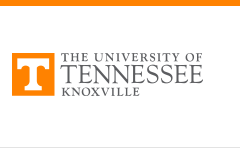
Masters Theses
Date of Award
8-2002
Degree Type
Thesis
Degree Name
Master of Science
Major
Aerospace Engineering
Major Professor
James Evans Lyne
Committee Members
Robert E. Bond, Joe Iannelli
Abstract
The potential application of aerocapture for future unmanned exploratory missions to Venus has been examined to determine if it is a viable means of capture into Venus orbit. While many probes have already been sent to Venus, none of them used an aerocapture maneuver to insert into orbit. All of them depended on bulky rocket motors to slow the craft down sufficiently to allow capture. Aerocapture uses the atmosphere to reduce the velocity of the craft until it is captured into orbit. An Apollo configuration vehicle similar in size to the Pioneer probes of the early 1980's is examined over an entry velocity range of 11 km/s to 14 km/s for the entry corridor, minimizing post aerocapture delta-V, and stagnation point heating. Also included is an examination of changes in ballistic coefficient, an alternate angle of attack, and atmospheric dispersions. Because Venus is similar in size to Earth, the target orbit for all cases was an altitude of 407 km. Deceleration constraints were added in the research, after the size of the entry corridor was found to be much larger than expected. Final results showed that aerocapture would be a viable means of insertion into Venus orbit for robotic missions. The entry corridor was found to be approximately 1.65 degrees at 11 km/s decreasing to approximately 1.0 degrees at 14 km/s. Estimates of the stagnation point heating also showed that modem materials would be able to withstand the entry and protect the craft.
Recommended Citation
Craig, Anthony Scott, "A study of aerocapture into Venus orbit for future exploratory missions. " Master's Thesis, University of Tennessee, 2002.
https://trace.tennessee.edu/utk_gradthes/5905

